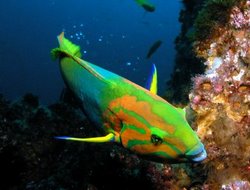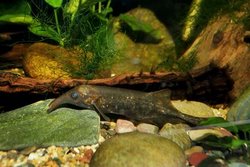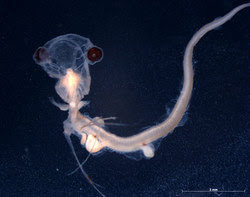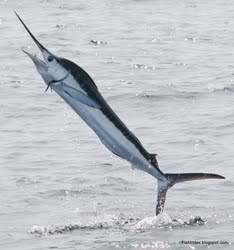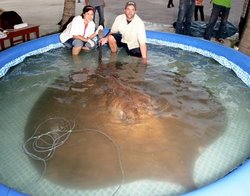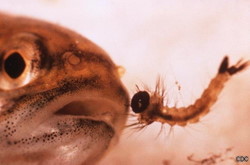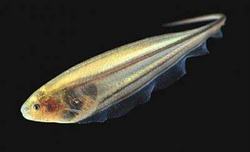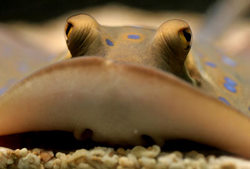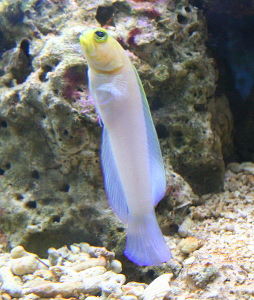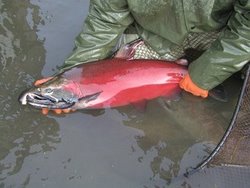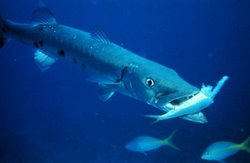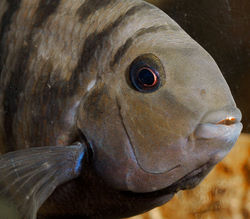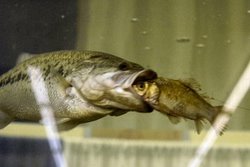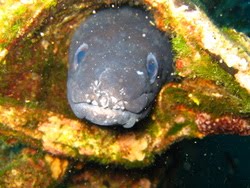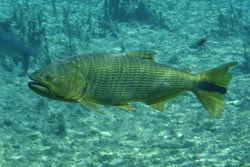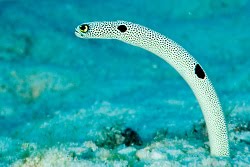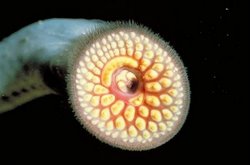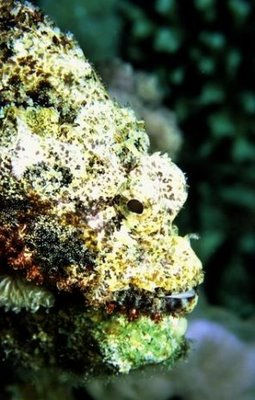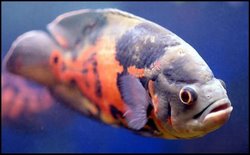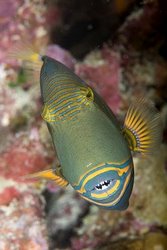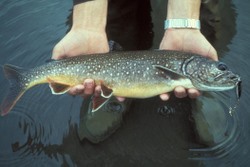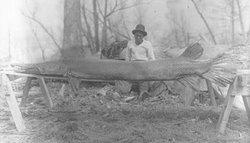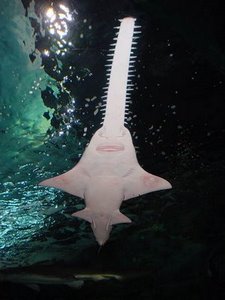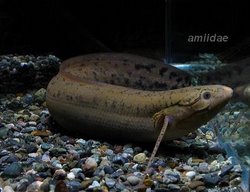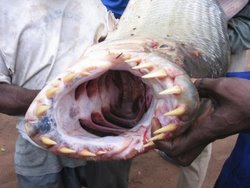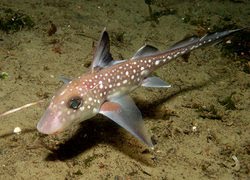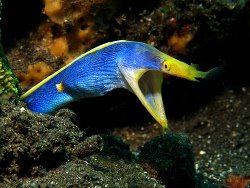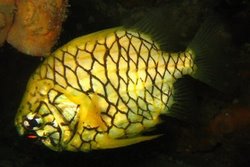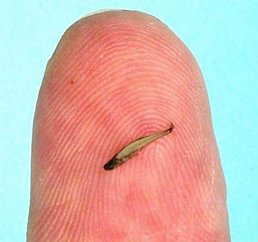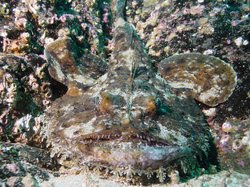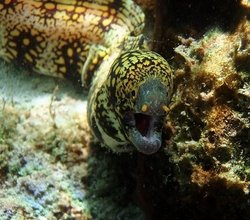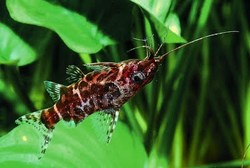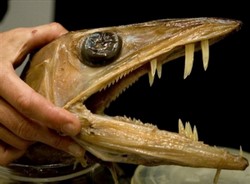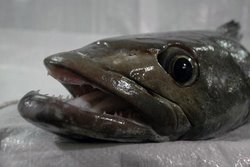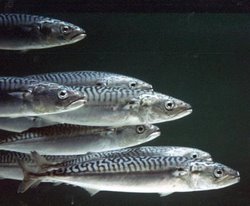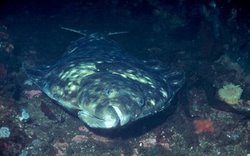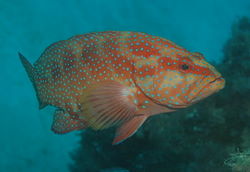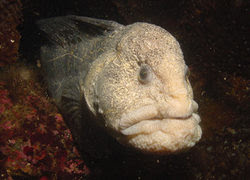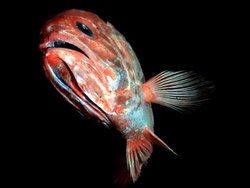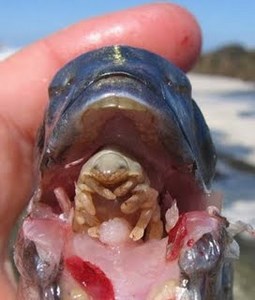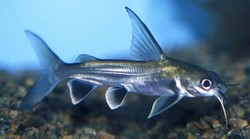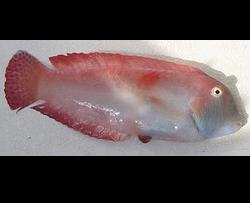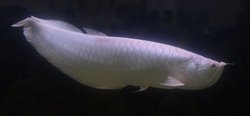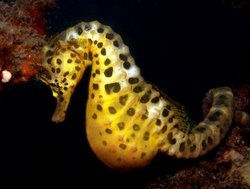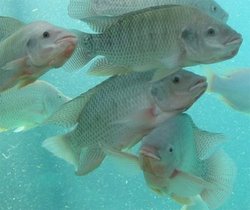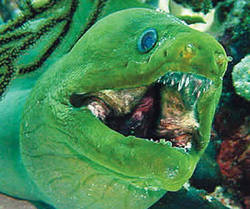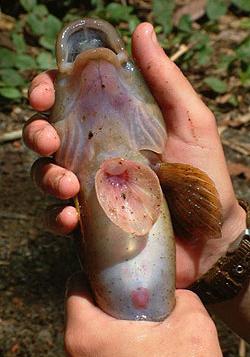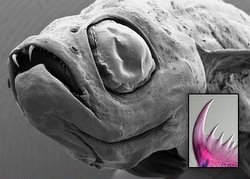 The Murray Cod or Maccullochella peelii peelii is a very large freshwater fish that is found exclusively in Australia. Also known simply as Cod, Greenfish or Goodoo, these fish can grow to 183 cm, 113 Kg (6 ft, 250 lbs), and are well represented in numerous pubs in Australia! Unfortunately, due to over-fishing and habitat destruction, the numbers of this once abundant fish have drop considerably. It is now listed as a threatened species.
The Murray Cod or Maccullochella peelii peelii is a very large freshwater fish that is found exclusively in Australia. Also known simply as Cod, Greenfish or Goodoo, these fish can grow to 183 cm, 113 Kg (6 ft, 250 lbs), and are well represented in numerous pubs in Australia! Unfortunately, due to over-fishing and habitat destruction, the numbers of this once abundant fish have drop considerably. It is now listed as a threatened species.Murray Cod have a lower jaw that protrudes out from its body with sharp, but small teeth. They are normally a light or dark green on their backs and sides, with a cream colored belly. Once these fish get larger, they tend to widen out instead of getting longer. This can make for one fat fish and one great fight!
Murray Cod are ferocious carnivores that will eat just about anything that fits into their mouths, including small fish, crayfish, shrimp, mussels, water fowl, frogs, small mammals and tortoises. This species of Australian freshwater fish takes care of its eggs more then some fish. The Murray Cod spawns in the springtime after they are 4 to 6 years of age. They normally lay their eggs in hollows logs or around rocks, normally no deeper than 3 meters. After the female lays her eggs she leaves, letting the male fertilize and guard the nest until about a week after the eggs hatch. They are very protective over their nest and young fry and will defend their nest at all costs. These fish can live for a very long time, some think even past 70 years of age, but again due to over-fishing and habitat destruction, they rarely live anywhere close to that long.
While the Murray Cod is normally considered to be just a game fish, there are many people in Australia that actually keep these fish as an aquatic pet. You can check out a Murray Cod underwater in the video below...
If you have any more information about the Murray Cod that you would like to share please leave it below...







